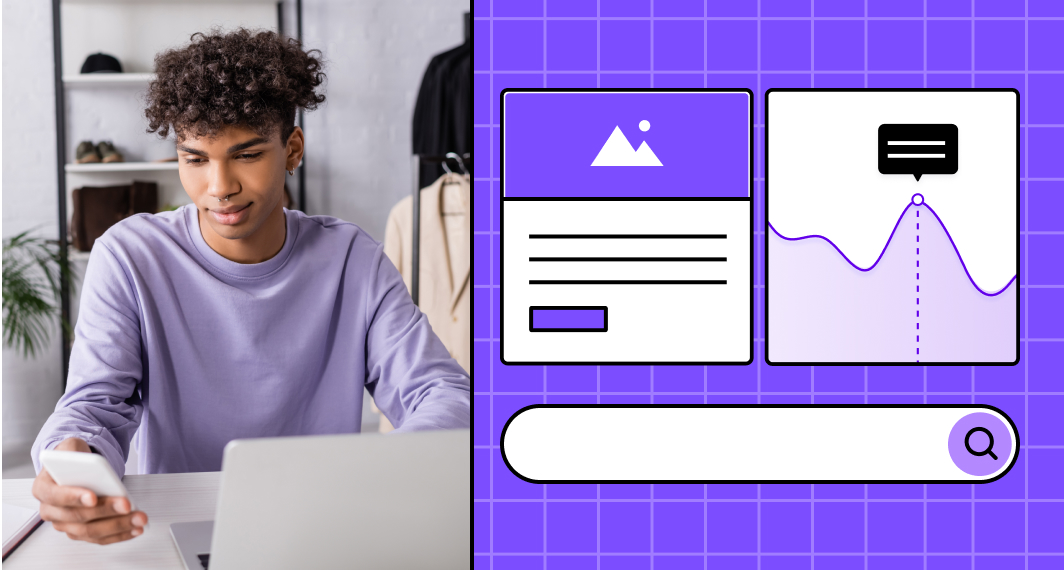What is the checkout process?
The checkout process in the world of ecommerce refers to the final steps a customer takes to complete a purchase. It’s the culmination of their online shopping journey, beginning with the addition of items to their virtual shopping cart and ending with the transaction. The checkout process connects an interested shopper to a satisfied customer.
The 10-step checkout process
A typical checkout process on an ecommerce website or an app consists of several steps that a customer must complete in order to make an online purchase. While the specific steps may differ slightly depending on the ecommerce platform or website, the fundamental elements remain the same. Here’s what they look like:
1 - View cart
The customer begins the checkout process after adding items to their virtual shopping cart by clicking on the "Cart" or "Checkout" button. They can now review the items in their cart, make changes (e.g. update quantities or remove products) and view the total cost.
2 - Login or guest checkout
If the customer already has an account, they may be asked to log in at this point. Many websites, on the other hand, provide a guest checkout option, allowing customers to proceed without creating an account. Offering a guest checkout option lowers entry barriers and simplifies the process.
3 - Enter shipping information
The customer enters their shipping information, which includes their name, address and contact information. This step is critical to ensuring that the purchased items are delivered correctly and on time.
4 - Choose your shipping method
The customer chooses their preferred shipping method from the options available. Standard shipping, express delivery or other specialised services with varying delivery times and costs may be available.
5 - Enter payment information
The customer then enters their payment information. They can use credit/debit cards, digital wallets (such as PayPal) or bank transfers to make secure payments. To accommodate different customer preferences, it’s critical to offer a variety of payment options.
6 - Review order summary
The website displays an order summary for the customer to review before finalising the purchase. The summary includes itemised prices, quantities, shipping charges, applicable taxes and any discounts or promotional codes that have been applied.
7 - Apply discounts and promotional codes
If the customer has any valid discounts or promotional codes, they can enter them in a designated field to receive the benefits associated with them.
8 - Review and confirm
At this point, the customer double-checks all of the information provided to ensure its accuracy. They can also make any changes necessary or return to the previous steps if necessary.
9 - Place order
The customer places the order once they are satisfied with the order details. They authorise the transaction and the payment is processed by clicking the "Place Order" or "Pay Now" button.
10 - Order confirmation
When a payment is successfully processed, the customer receives an order confirmation on the website and, in many cases, via email. This confirmation serves as a receipt and includes important order information such as the order number, items purchased, billing and shipping information and estimated delivery date.
4 main reasons why checkout process is important
There are a few reasons why the checkout process is used by every ecommerce vendor. Here are the main ones:
Conversion rate optimization
A simple and easy-to-use checkout process can have a significant impact on a website's conversion rate. Reduced friction and simplified steps result in higher completion rates, which converts more visitors into customers.
Customer experience
Customers will remember a smooth checkout experience, which will encourage brand loyalty and positive word-of-mouth referrals.
Cart abandonment prevention
Cart abandonment, which occurs when a customer leaves a website without completing a purchase, is a common issue for online retailers. A well-designed checkout process can mitigate this problem, increasing revenue potential.
Mobile responsiveness
As mobile shopping grows in popularity, making sure the checkout process is mobile-friendly becomes increasingly important. A responsive design enables customers to complete transactions on a variety of devices, resulting in a larger customer base.
5 best practices for an effective checkout process
- Guest checkout option- by providing a guest checkout option, customers are relieved of the need to create an account, reducing friction and speeding up the process
- Progress indicators- implementing progress indicators during checkout increases transparency by informing customers of the number of steps remaining and decreasing uncertainty
- Autofill capabilities- customers can save time and effort by using autofill features on forms, especially on mobile devices
- Visual cues and calls-to-action- clear and visually appealing "Add to Cart," "Checkout" and "Pay Now" buttons can improve navigation and encourage customers to complete their purchase
- Real-time support- providing live chat or customer support during the checkout process allows you to quickly address any concerns or questions, preventing cart abandonment
Get a free app prototype now!
Bring your software to life in under 10 mins. Zero commitments.


 Facebook
Facebook X
X LinkedIn
LinkedIn YouTube
YouTube Instagram
Instagram RSS
RSS


